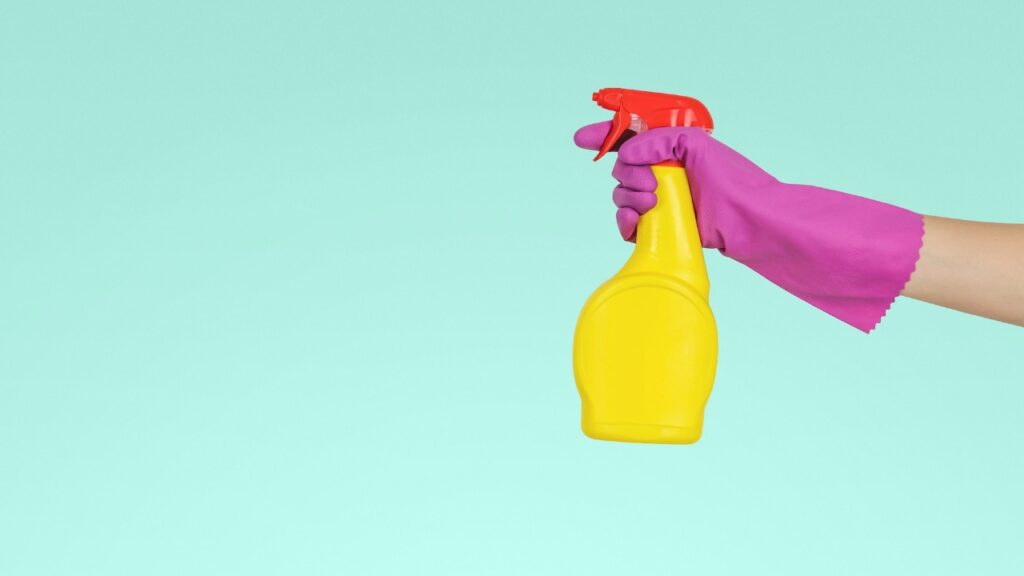Cleaning white kitchen cabinets to maintain their pristine appearance involves regular upkeep and the use of suitable cleaning methods and products. Here’s a comprehensive guide to effectively clean and preserve the beauty of white cabinets:
Cleaning white cabinets effectively involves using gentle yet effective cleaning solutions to maintain their pristine appearance. Here are some recommended options:
1. Mild Dish Soap and Water Solution
- Create a mixture of warm water and mild dish soap or detergent.
- Dip a microfiber cloth or sponge into the solution and gently wipe the cabinet surfaces to remove dirt and grime.
2. All-Purpose Cleaners (Non-Abrasive)
- Use mild, non-abrasive all-purpose cleaners specifically formulated for wood or cabinet surfaces.
- Apply the cleaner to a cloth or sponge and gently wipe the cabinets, following the wood grain or finish direction.
3. White Vinegar Solution
- Mix equal parts of white vinegar and water to create a natural cleaning solution.
- Dampen a cloth or sponge with the solution and use it to clean stains or grease spots on the cabinets.
4. Baking Soda Paste
- Create a paste of baking soda and water for tougher stains or stubborn spots.
- Apply the paste to a soft cloth and gently scrub the stained areas before rinsing with a clean, damp cloth.
5. Commercial Cabinet Cleaners (Wood-Safe)
- Use commercial cleaners specifically designed for cleaning kitchen cabinets.
- Ensure the cleaner is safe for the cabinet’s material and finish.
Cleaning Guide
Materials Needed
- Microfiber cloths or soft sponges
- Mild dish soap or detergent
- White vinegar or baking soda
- All-purpose cleaner (mild and non-abrasive)
- Warm water
- Olive oil or wood conditioner (if cabinets are wooden)
Cleaning Process
1. Regular Dusting:
- Start by dusting the cabinets regularly with a dry microfiber cloth or a soft sponge to remove loose particles.
2. General Cleaning:
- Create a solution of warm water and mild dish soap or use a mild all-purpose cleaner.
- Dampen a cloth or sponge with the solution and gently wipe the cabinet surfaces, following the wood grain or the direction of the finish. Avoid excessive moisture.
3. Removing Stubborn Stains:
- For tougher stains, create a paste of baking soda and water or use a small amount of white vinegar on a cloth to spot clean the affected areas.
- Gently rub the stained spots, rinse with a damp cloth, and dry immediately to prevent water damage.
4. Avoid Harsh Chemicals:
- Steer clear of abrasive cleaners, bleach, ammonia, or harsh chemicals as they can damage the cabinet finish.
5. Oily Residues:
- If dealing with greasy or oily spots, use a diluted vinegar solution or a mild detergent to cut through the residue.
- Wipe with a clean, damp cloth afterward to remove any remaining cleaner.
6. Wooden Cabinets:
- For wooden cabinets, occasional conditioning with olive oil or a recommended wood conditioner helps preserve the wood and maintains its luster.
- Apply a small amount to a clean cloth, rub it onto the wood, and wipe off excess oil to prevent buildup.
7. Glass or Metal Hardware:
- Clean metal or glass hardware separately using appropriate cleaners to maintain their shine without damaging them.
8. Drying and Buffing:
- Always dry the cabinets immediately after cleaning to prevent water stains or damage.
- Buff the surfaces with a dry microfiber cloth for a streak-free finish.
9. Preventive Maintenance:
- Use coasters or placemats to prevent spills and watermarks.
- Promptly clean any spills or splatters to prevent stains from setting in.
Additional Tips
- Test cleaners in inconspicuous areas first to ensure they don’t damage the finish.
- Use separate cloths or sponges for cleaning and drying to avoid spreading dirt.
- Clean cabinets regularly, at least once a week, to prevent buildup and maintain their appearance.
Conclusion
Regular and gentle cleaning is key to preserving the pristine look of white kitchen cabinets. Using mild cleaners, avoiding harsh chemicals, and promptly addressing stains or spills can help maintain the cabinets’ beauty for years to come.


